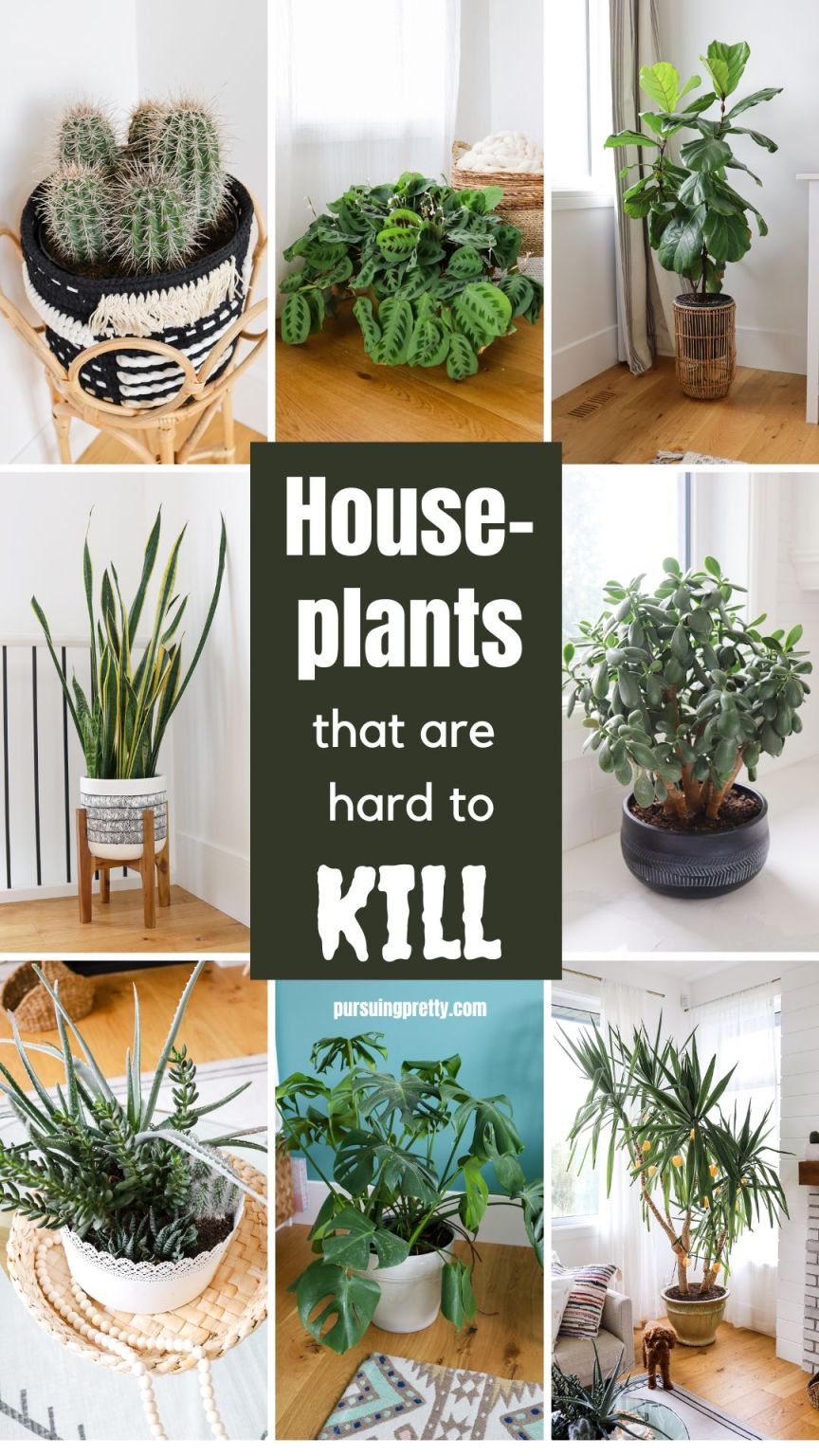Unkillable House Plants: The Easiest Green Companions For The Not-So-Green Thumbs

Hard to Kill House Plants: A Guide to Low-Maintenance Indoor Greenery
Welcome to our comprehensive guide on hard to kill house plants! If you have a knack for killing even the most resilient plants, don’t worry, we’ve got you covered. In this article, we will explain what hard to kill house plants are, how to care for them, and provide you with a list of popular varieties that are known for their resilience. Whether you’re a seasoned plant parent or just starting out, these low-maintenance indoor greenery options will bring life to your home with minimal effort.
What do we mean by hard to kill house plants?
When we refer to hard to kill house plants, we are talking about plant species that can withstand neglect, occasional lack of water, and low light conditions. These plants are known for their adaptability and ability to thrive even under less than ideal circumstances. They are perfect for busy individuals, frequent travelers, or those who simply have a difficult time keeping plants alive.
How to care for hard to kill house plants?
One of the reasons hard to kill house plants are so popular is their easy care requirements. Here are some general tips to help you keep your low-maintenance indoor greenery happy and healthy:
– Water sparingly: Most hard to kill house plants prefer slightly dry soil, so it’s important not to overwater them. Allow the soil to dry out between waterings, and only water when the top inch of soil feels dry to the touch.
– Provide adequate light: While these plants can tolerate lower light conditions, they still require some degree of sunlight. Place them near a window where they can receive indirect light for a few hours each day.
– Avoid extreme temperatures: Hard to kill house plants generally prefer temperatures between 60-75°F (15-24°C). Keep them away from drafty windows or air conditioning vents, as sudden temperature fluctuations can be detrimental to their health.
– Use well-draining soil: Good drainage is crucial for these plants, as they don’t like to sit in waterlogged soil. Choose a well-draining potting mix specifically formulated for indoor plants to ensure proper moisture levels.
– Don’t over-fertilize: Hard to kill house plants have low nutritional requirements and can actually be harmed by excessive fertilization. Use a balanced houseplant fertilizer and follow the recommended dosage instructions.
What is known about hard to kill house plants?
Hard to kill house plants have been popular for years, and their reputation for being resilient is well-established. These plants have adapted to survive in various environments, including low light levels and infrequent watering. They are known for their ability to purify the air, improve indoor humidity, and bring a touch of nature to any living space.
Many of these plants are native to tropical regions where they grow in shaded areas under the canopy of larger trees. This adaptation enables them to thrive in lower light conditions, making them ideal for indoor environments.
Another interesting fact about hard to kill house plants is their ability to tolerate some neglect. Their foliage may become slightly droopy or yellow when they’re in need of water, but most of them will bounce back quickly once watered. This resilience makes them forgiving for those who may forget to water on occasion.
Solution: Top hard to kill house plants for your home
Now that you have a better understanding of hard to kill house plants, let’s explore some popular varieties that are perfect for your indoor jungle:
1. Snake Plant (Sansevieria trifasciata)
The snake plant is a classic choice for beginners and seasoned plant enthusiasts alike. It has long, sword-shaped leaves with vibrant green coloration. Snake plants are known for their air-purifying abilities and can thrive in various light conditions, including low light.
2. ZZ Plant (Zamioculcas zamiifolia)
The ZZ plant is a tough, glossy-leaved plant that can handle neglect like a pro. It has a unique growth pattern and can survive in low light and irregular watering. The ZZ plant is a great option for those looking for a statement plant that requires minimal effort.
3. Pothos (Epipremnum aureum)
Pothos is a trailing vine with heart-shaped leaves that come in various shades of green, yellow, or white. It is a versatile plant that can be grown in water or soil, and it can tolerate a wide range of light conditions. Pothos is perfect for hanging baskets or cascading down shelves.
4. Spider Plant (Chlorophytum comosum)
The spider plant is a popular choice for its arching leaves with white stripes. It is a resilient plant that can handle low light, fluctuating temperatures, and occasional forgetfulness when it comes to watering. Spider plants also produce baby spiderettes that can be propagated into new plants.
5. Chinese Evergreen (Aglaonema)
Chinese evergreens are attractive plants with variegated leaves that come in various shades of green, silver, or red. They can tolerate low light conditions and prefer slightly moist soil. Chinese evergreens are great for adding a pop of color to any room.
These are just a few examples of hard to kill house plants, but there are many more options to explore. Consider your specific lighting conditions, space availability, and personal preferences when selecting plants for your home.
Conclusion
Hard to kill house plants are the perfect solution for individuals looking to add greenery to their homes without the hassle of high-maintenance care. With their adaptability, resilience, and ability to thrive in low light conditions, these plants are a great addition to any indoor space. By following some basic care guidelines and choosing the right plant for your environment, you can enjoy the benefits of houseplants without the stress of constant attention.
FAQs (Frequently Asked Questions)
1. How often should I water hard to kill house plants?
Hard to kill house plants should be watered when the top inch of soil feels dry to the touch. It’s important not to overwater them, as they prefer slightly dry soil. Allow the soil to dry out between waterings.
2. Can hard to kill house plants survive in low light conditions?
Yes, many hard to kill house plants can tolerate low light conditions. While they may not thrive in complete darkness, they can still survive and maintain their health. Place them near a window where they can receive indirect light for a few hours each day.
3. Do hard to kill house plants require fertilization?
Hard to kill house plants have low nutritional requirements and can be harmed by excessive fertilization. Use a balanced houseplant fertilizer and follow the recommended dosage instructions. Fertilize them sparingly, usually during the growing season.
4. Can hard to kill house plants be placed in the bathroom?
Yes, many hard to kill house plants can thrive in the humid environment of a bathroom. However, make sure they still receive some indirect light and avoid placing them too close to heating vents or drafty areas.
5. Are hard to kill house plants safe for pets?
While most hard to kill house plants are non-toxic to pets, it’s always a good idea to double-check before introducing any new plant into your home. Some plants may cause mild digestive upset if ingested by curious pets. Keep them out of reach or choose pet-friendly varieties if you have animals in your home.

I am a beginner writer who continues to learn and consistently creates informative articles to express the ideas that I master.